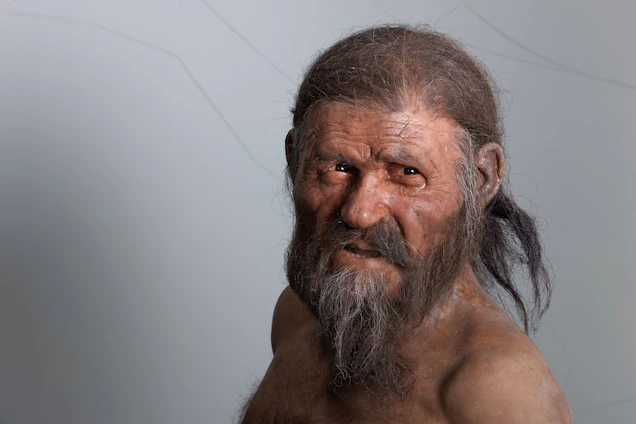Considered "Europe’s most famous mummy," the remains of the man who was murdered in the Alps 5,000 years ago continue to reveal details of Neolithic life—and insights into modern health.
A reconstruction of Ötzi the Iceman, who lived and died in the European Alps some 5,200 years ago. His naturally mummified remains were discovered by German hikers on September 19, 1991.
PHOTOGRAPH BY ROBERT CLARK, NAT GEO IMAGE COLLECTION
Thirty one years ago , Europe’s most famous mummy was discovered lying face-down in the ice, on the edge of a lake nearly two miles high in the Ötztal Alps bordering Austria and Italy.
Naturally preserved by more than 5,000 years of sun, wind, and freezing temperatures, the leathery remains of Ötzi the Iceman quickly became a global sensation, the subject of countless books and documentaries and even a feature film reconstructing his life in Neolithic Europe and his violent death.
Today, Ötzi is carefully tended to by researchers at the South Tyrol Museum of Archaeology in Bolzano, Italy, where his wizened body is kept in a custom cold chamber maintained at a constant temperature of –21.2 degrees Fahrenheit. Four or five times a year, his remains are sprayed with sterile water to create an icy, protective exoskeleton that ensures he stays a “wet mummy” (one naturally preserved in a wet rather than dry environment).
Join Amanda McBrien at the DNA Learning Center to view the world’s first replica of Ötzi the Iceman and to see what Ötzi’s body, DNA, and belongings tell us about Neolithic people.
In this DNALC Live session, you will:
• Observe the life-size replica of Ötzi the Iceman and learn how the replica was produced
• Explore what Ötzi’s DNA reveals about his traits, health, and relationship to modern people
• Discuss the artifacts found near Ötzi’s body and learn what they tell us about prehistoric life Presenter: Amanda McBrien, DNA Learning Center







